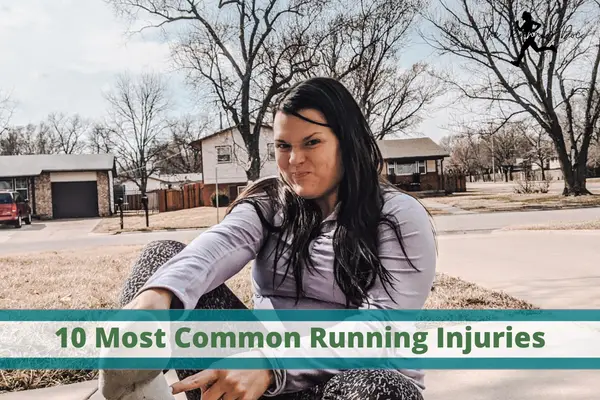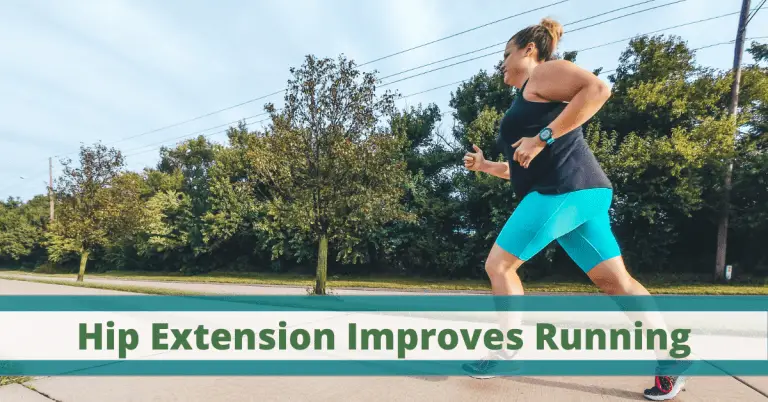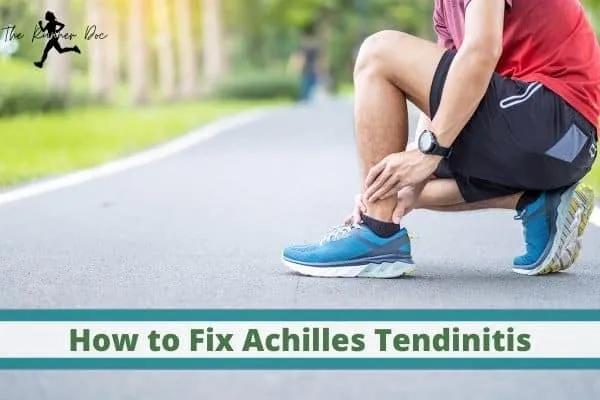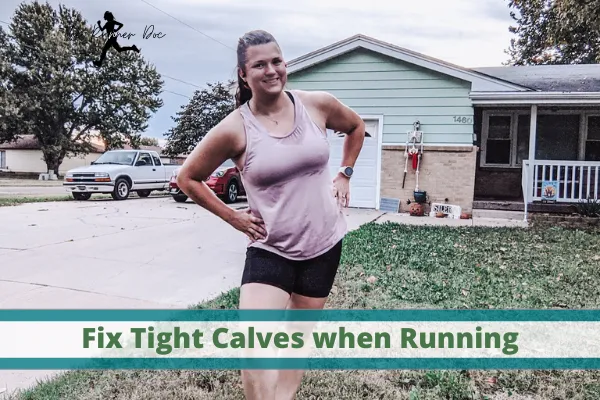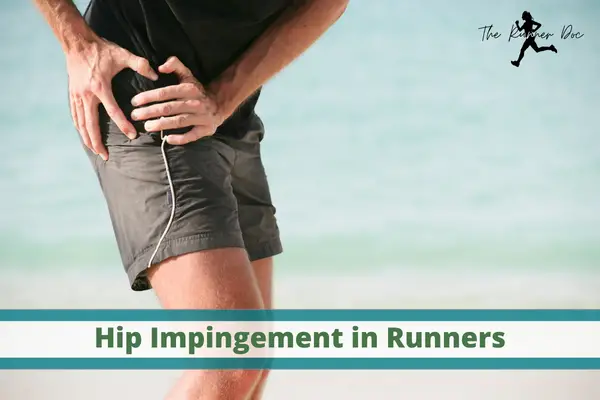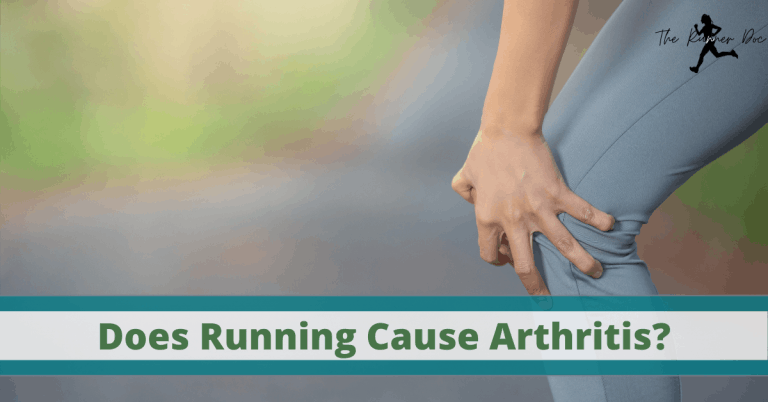A Comprehensive Guide to the Most Common Running Injuries: Protect Your Body and Keep Moving Strong!
Roundup of the Most Common Running Injuries
Running is an excellent way to get your daily exercise, however, it can come with some risk of injury. The majority of running injuries are caused by overuse or incorrect form, so it’s important to take proper care of your body while on the run. In this article, we will cover some of the most common running injuries and recommended treatments for each one.
Types of Running Injury Classifications
There are many types of running injuries. Some are classified as overuse injuries while some are either traumatic or neurologic. This article is going to discuss any and all running injuries instead of sectioning them out.
In the image below you can see the top 26 running injuries and we are going to focus on the top 10 of these.

Top 10 Running-Related Injuries in Adults
Click on the injury name for a full article and more information on each issue.
1. Patellofemoral Pain Syndrome (Runner’s Knee)
Where it hurts: Bottom, underneath, and/or inner side of the knee cap.
How it feels: Sharp or diffuse pain while running that is more noticeable when going up and down stairs or running hills.
Causes: Overuse; sudden increases in the intensity of physical activity; weak hip muscles; decreased hip mobility
Self-Care: Decrease running volume; strengthen glutes and hips; work on mobility in hips; work with a Physical Therapist.
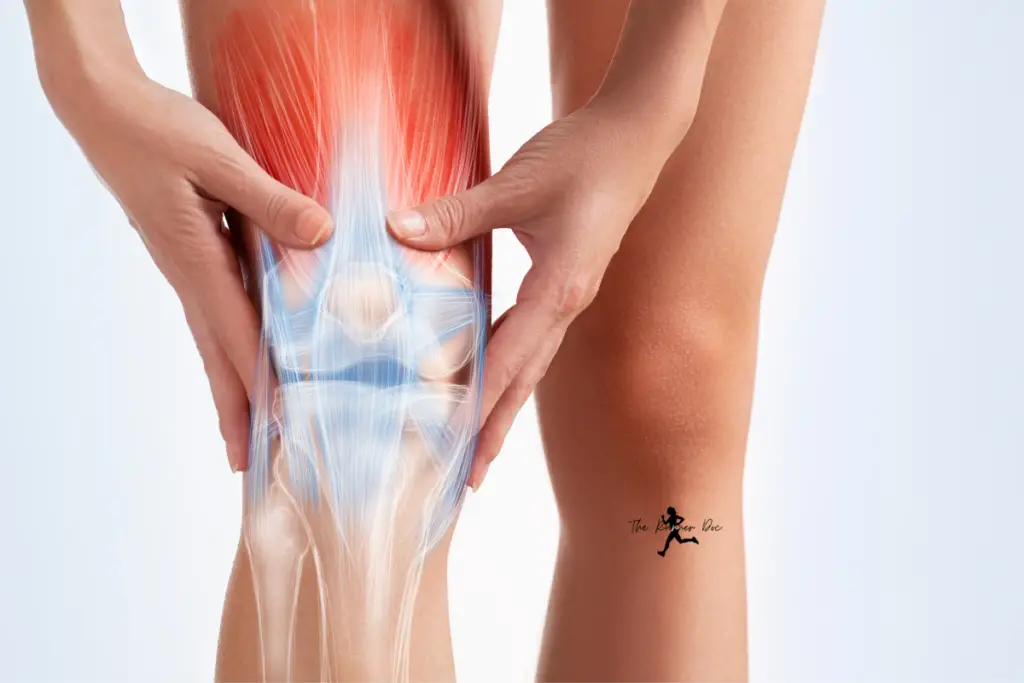
2. Iliotibial Band Syndrome (ITBS)
Where it hurts: Outside of the upper leg and/or the outside of the knee cap.
How it feels: Pain on the outside of the knee or upper leg.
Causes: Often associated with running on a track or roads with an incline. Other causes include overuse; decreased mobility; weak pelvic, hip, and buttock muscles; knee alignment issues.
Self-Care: specific IT Band stretching; vary walking and running routes; reduce mileage and hill work; strengthen pelvic, hip, and buttock muscles; wear IT Band compression wrap to add compression and support short-term; work with a Physical Therapist.
3. Plantar Fasciopathy
Where it hurts: Bottom of the foot.
How it feels: Sharp knife-like pain inside the heel; heel pain during first morning steps and at the end of the day; burning or sharp pain in the arch of your foot.
Causes: Prolonged standing; being overweight; shoes; tight calf and Achilles tendon; flexible arch; decreased big toe extension.
Self-Care: Get fit with proper running shoes; night splints; consistent stretching – especially of the calf muscles; reduce wearing of heeled shoes; work with a Physical Therapist.
4. Meniscal Injuries *
Where it hurts: in the knee joint; usually on the inside (medial), outside (lateral), or back of the knee
How it feels: Swelling or stiffness; Pain when twisting or rotating your knee; difficulty
Causes: planting your foot and twisting your leg.
Self-Care: Relative rest; ice; hip strength; quad strength; work with a Physical Therapist.
5. Tibial stress syndrome (MTSS or Shin Splints)
Where it hurts: Inner part of the front of the leg.
How it feels: Diffuse, achy pain; soreness; tenderness; mild swelling.
Causes: Often occurs when increasing mileage or beginning a training program. Other causes include training too much, too fast, too long; calf and Achilles tightness; flat feet; unsupportive or worn-out shoes.
Self-Care: Get fit with proper running shoes; replace running shoes every 300-500 miles; stretch; toe and foot strength/mobility; ankle strength and mobility; work with a Physical Therapist.
6. Patellar Tendinopathy(jumper’s knee)
Where it hurts: bottom of the kneecap
How it feels: pinpoint pain at the bottom of the kneecap that increases with going down stairs, running downhill, or jumping; immediately goes away once you stop the activities mentioned.
Causes: overuse injury from the increase in mileage.
Self-Care: Decrease training load, systematically loading the patellar tendon with appropriate strength exercises; work with a Physical Therapist.
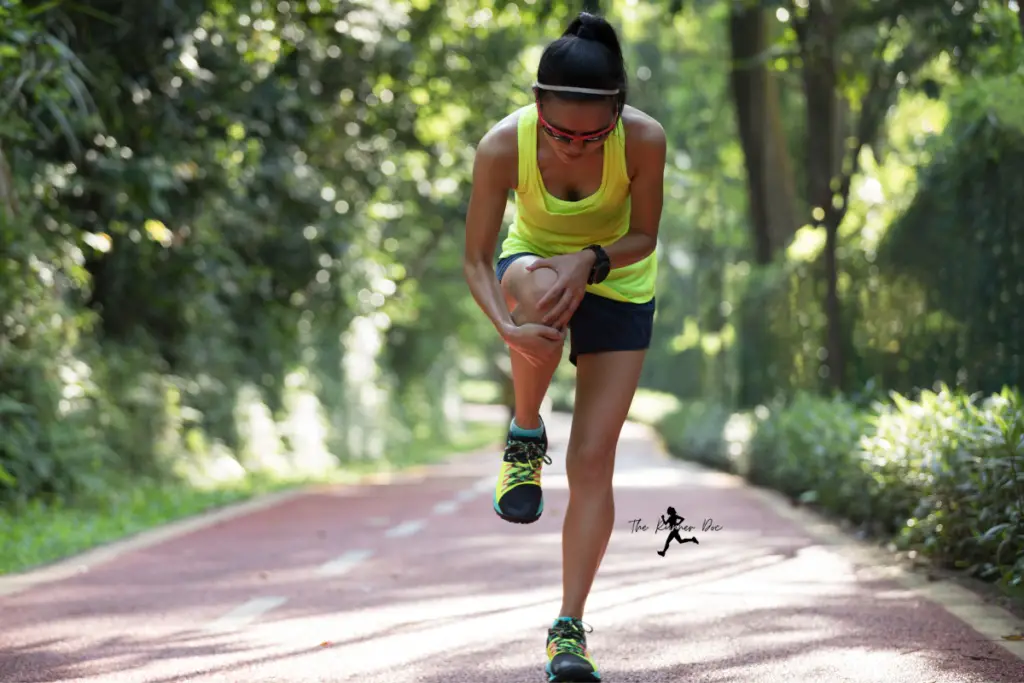
7. Achilles Tendinopathy
Where it hurts: Lower calf muscles on the back of the leg.
How it feels: Dull ache, pain, and stiffness; may be more prevalent in the morning; tenderness when you push on your Achilles.
Causes: Constant uphill running; overuse; shifting from higher-heeled dress shoes to running shoes; aggressive pace (too much, too fast, too long).
Self-Care: Ice massage; strengthening feet and calves; calf stretches; modify activities; work with a Physical Therapist.
8. Glute Medius Syndrome (Runner’s Butt) *
Where it hurts: Deep in your glute (butt)
How it feels: Dull radiating pain; can go down into the thigh; increase in pain while running, especially uphill or running faster.
Causes: overuse, running too much too soon; aggressive pace.
Self-Care: glute strengthening; hip mobility; work with a Physical Therapist.
9. Tibial Stress Fracture
Where it hurts: Sharp pain in your shin
How it feels: Sharp pain in your lower leg on the bone, localized tenderness and swelling; pain that increases as you run.
Causes: overtraining; not healing from shin splints; poor mechanics; poor nutrition; improper recovery.
Self-Care: Rest; See a Medical Professional including a Physical Therapist.
10. Hamstring Injuries *
Where it hurts: back of thigh; deep in the buttock at the base of the buttock
How it feels: hamstring strains are sharp in the back of the thigh; hamstring tendinopathy is a deep ache.
Causes: aggressive pacing and hill training; movement dysfunctions; muscle imbalances.
Self-Care: Slower paced runs; flat terrain; fixing muscle imbalances; hip mobility; work with a Physical Therapist
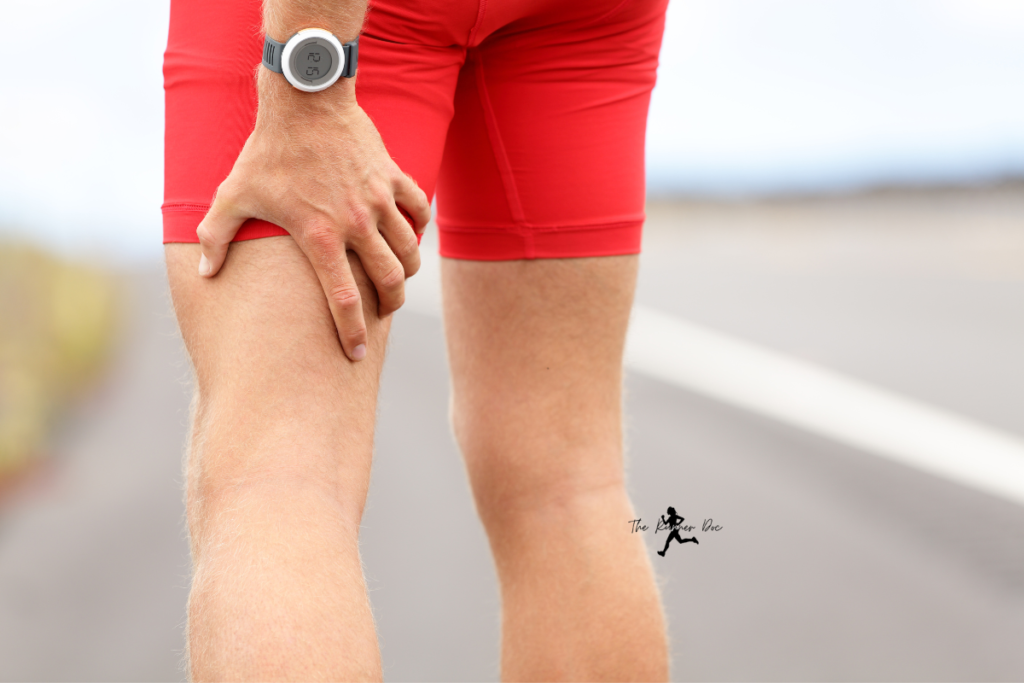
Final Thoughts on the 10 Most Common Running Injuries
In conclusion, running is a great way to stay in shape and have fun. However, it’s important to be aware of the potential injuries that can occur from overuse or improper technique.
The 10 most common running injuries outlined here are all preventable with proper training and rest. Be sure to listen to your body for signs of pain or fatigue and take appropriate action if needed. Taking proactive steps now will help you avoid long-term injury down the road!
Ultimately, happy life-long running should always come before pushing yourself too hard – so don’t forget to enjoy the process!
AFFILIATE DISCLOSURE
As an Amazon Associate, I earn from qualifying purchases. This post may contain affiliate links. If you use these links to buy something we may earn a commission. The Site may contain links to affiliate websites, and we receive an affiliate commission for any purchases made by you on the affiliate website using such links.
All information should be used as a tool for more knowledge on the subject topic, to use as references for later articles where applicable, or just to keep it in mind during future exercise routines or activities.
This article is not meant to give medical advice or to replace professional health care. Should any ailment occur please contact your doctor or physical therapist immediately to keep yourself safe and prevent further damage.
The author is not liable for any personal or commercial damage directly or indirectly related to the content hereof. You are responsible for adhering to local laws and regulations regarding health & safety, including proper use of equipment or safety gear, and compliance with governing healthcare associations, and state, and federal regulations.
References for Most Common Running Injuries
- Taunton JE, Ryan MB, Clement DB, McKenzie DC, Lloyd-Smith DR, Zumbo BD. A retrospective case-control analysis of 2002 running injuries. Br J Sports Med. 2002 Apr;36(2):95-101. doi: 10.1136/bjsm.36.2.95. PMID: 11916889; PMCID: PMC1724490. https://www.ncbi.nlm.nih.gov/pmc/articles/PMC1724490/pdf/v036p00095.pdf
- Nielsen RO, Nohr EA, Rasmussen S, Sørensen H. Classifying running-related injuries based upon etiology, with emphasis on volume and pace. Int J Sports Phys Ther. 2013 Apr;8(2):172-9. PMID: 23593555; PMCID: PMC3625796. https://www.ncbi.nlm.nih.gov/pmc/articles/PMC3625796/
What are the Most common running injuries?
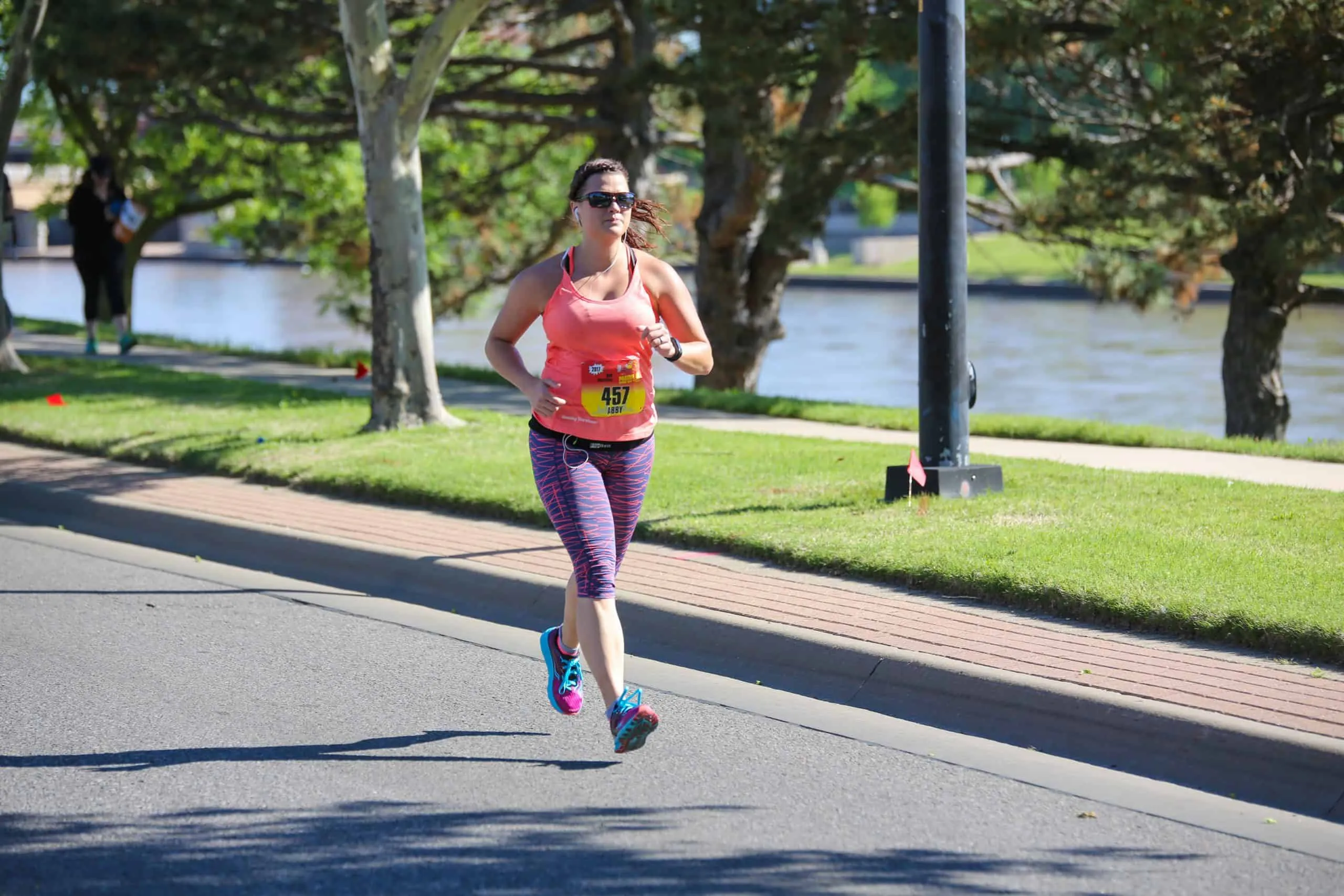
Dr. Abby Siler, PT, DPT is a Physical Therapist with 10 years of experience in a variety of settings. She has spent the majority of her time treating athletes in orthopedic clinics and worker’s compensation cases. She is a runner herself for the past 15 years and a lifelong athlete. Dr. Abby loves to teach runners how to stay injury free and out of her clinic.
